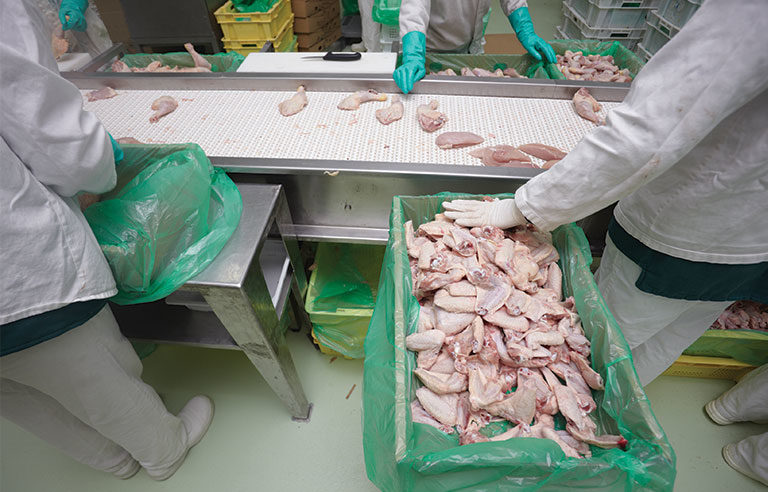Study of severe injury data finds poultry and meat workers at high risk

New York – Every day, 27 workers suffer on-the-job amputations or injuries that require hospitalization, according to a recent report from the National Employment Law Project.
The advocacy group’s report examined data from OSHA on reports of severe injuries that occurred from January 2015 to September 2016 in 29 states. (States with OSHA-approved reporting plans were excluded.) According to the data, employers reported 17,533 severe injuries during the study period.
Although the highest number of severe injuries were reported by some of the nation’s largest employers, two “much smaller” companies in the poultry and meat processing industry ranked fourth and sixth, respectively, among the more than 14,000 companies reporting.
“OSHA’s severe injury data shines a light on the severe toll of preventable workplace injuries, especially in the U.S. poultry industry,” Debbie Berkowitz, NELP senior fellow and lead report author, said in an April 27 press release. “The workers who put food on our tables should not have to sacrifice their health for a paycheck.”
The report also cites Bureau of Labor Statistics data that shows poultry workers are 1.6 times more likely to suffer work-related injuries and illnesses. Meatpacking workers are twice as likely to be injured on the job.
“The poultry industry has the resources to implement required safety measures, provide the required safety training in a manner that workers can understand, provide access to prompt and adequate medical care for workers injured on the job, and increase staffing to ensure that relief workers are available to allow for line-worker bathroom breaks and to ensure that lines are fully staffed,” the report states.
Overall, the poultry industry had the 12th-highest number of reported severe injuries. General medical and surgical hospitals topped the list, followed by support activities of oil and gas operations, and commercial and institutional building construction.
Post a comment to this article
Safety+Health welcomes comments that promote respectful dialogue. Please stay on topic. Comments that contain personal attacks, profanity or abusive language – or those aggressively promoting products or services – will be removed. We reserve the right to determine which comments violate our comment policy. (Anonymous comments are welcome; merely skip the “name” field in the comment box. An email address is required but will not be included with your comment.)

